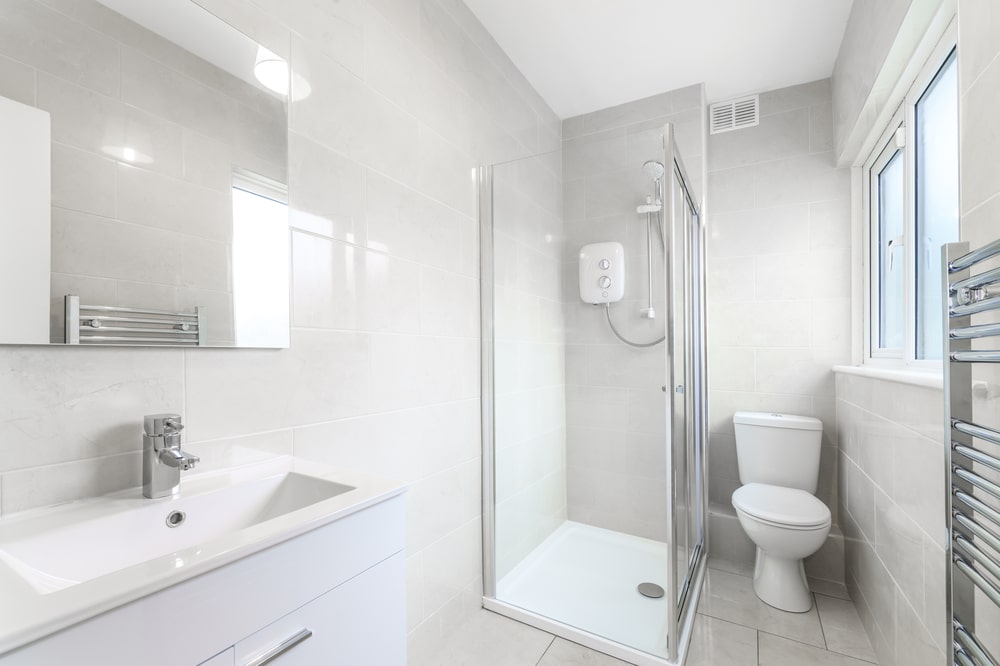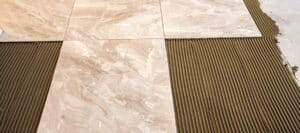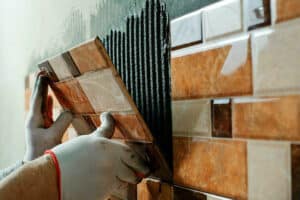Bathroom Fitting: The Post-Installation Phase
The work of bathroom installers & fitters extends beyond the installation process. Once the fixtures, cabinets, and tiles are set in place, the post-installation phase begins. This crucial stage involves maintenance, care, and early detection of potential issues.
The Importance of Post-Installation Care
Post-installation care is essential in ensuring the longevity and functionality of your newly fitted bathroom. It includes regular cleaning, inspection, and minor repairs when necessary. Proper care helps maintain the pristine condition of bathroom elements, extends their lifespan, and ensures they function optimally.
Just like the installation process, post-installation care also requires a level of expertise. By following ‘post-installation care: tips from bathroom fitting experts’, homeowners can avoid common bathroom issues, save on costly repairs, and enjoy a well-maintained bathroom for a longer time. For expert advice on bathroom fitting, you can refer to our articles on finding the right bathroom installer: what to look for and top tips from expert bathroom fitters: ensuring quality installations.
Common Post-Installation Issues
Despite the best efforts of skilled bathroom fitters, certain issues might surface post-installation. These issues can range from minor inconveniences to major problems that require immediate attention.
Some common post-installation issues include:
- Leaky Fixtures: Improperly fitted fixtures might leak over time leading to water wastage and potential water damage.
- Loose Tiles: Improperly installed or low-quality adhesive can result in loose or wobbly tiles.
- Faulty Plumbing: Plumbing issues can manifest as low water pressure, blockages, or leaks in the piping system.
- Damaged Cabinets: Cabinets can suffer from issues like loose hinges, sticky drawers, or water damage.
Recognizing these issues early and addressing them promptly can prevent them from escalating into more serious problems. Timely intervention, regular maintenance, and preventative measures are key to maintaining the functionality and aesthetics of your newly installed bathroom. For more detailed guidance, you can refer to our article on common challenges in bathroom installation and how to overcome them.
In the subsequent sections, we will delve deeper into expert tips for specific bathroom features, regular maintenance for longevity, preventative measures, and when to seek professional help.
Expert Tips for Specific Bathroom Features
After employing the services of bathroom installers & fitters, it’s crucial to know how to maintain the newly installed features. Here are some expert post-installation care tips for bathroom tiles, fixtures, and cabinets.
Caring for Bathroom Tiles
Bathroom tiles, whether on the floor or walls, are exposed to water, soap, and grime on a regular basis. To keep them looking new and prolong their lifespan, it’s important to clean them regularly.
Use a soft, non-abrasive cloth or sponge to wipe the tiles. Avoid using harsh chemicals or abrasive scrubbing tools as they can damage the tile surface. For stubborn stains, a mixture of baking soda and water can be applied and gently scrubbed.
Grout, the material that fills the space between tiles, can be more challenging to clean due to its porous nature. A mild bleach solution or a specifically designed grout cleaner can be used to clean grout lines. Ensure to rinse thoroughly afterward to remove any cleaning residue.
Caring for Bathroom Fixtures
Bathroom fixtures such as faucets, showerheads, and handles require regular cleaning to prevent buildup of soap scum, water spots, and mineral deposits.
Wiping fixtures with a damp cloth after each use can help prevent these issues. For deeper cleaning, a mild soap solution can be used. Rinish thoroughly and dry with a clean cloth to avoid water spots.
Avoid using abrasive cleaners or brushes, which can scratch and damage the fixture’s surface. If fixtures are made of special materials like brass or bronze, consider using a cleaner specifically designed for that material to prevent discoloration or damage.
Caring for Bathroom Cabinets
Bathroom cabinets, especially those made of wood, need specific care to prevent damage from humidity and water spills.
Regularly dust the cabinets with a soft cloth, and clean spills immediately to prevent staining or water damage. Avoid using abrasive cleaners or tools which can scratch the surface. Instead, use a mild soap solution or a cleaner specifically designed for wood.
Condition the wood periodically with a suitable wood conditioner to keep it looking its best and to protect it from humidity.
Remember, regular care and maintenance not only keep your bathroom looking beautiful but can also save you from costly repairs in the future. For more advice on installing and maintaining bathrooms, explore our complete guide to professional bathroom fitting services.
Regular Maintenance for Longevity
Maintaining a new bathroom after the installation process is crucial to ensure its longevity and keep it in the best possible condition. Regular maintenance involves adhering to a consistent cleaning schedule, implementing effective cleaning techniques, and conducting regular inspections and minor repairs.
Cleaning Schedules and Techniques
A crucial aspect of post-installation care involves setting up a regular cleaning schedule. This not only helps to maintain the aesthetic appeal of the bathroom but also extends the life of its components. Experts recommend cleaning the bathroom at least once a week, with more thorough cleanings required monthly.
Effective cleaning techniques that do not cause damage to bathroom fixtures and finishes must be employed. For instance, avoid abrasive cleaning tools or harsh chemical cleaners that could scratch or discolor surfaces. Instead, opt for soft cleaning cloths and mild detergents. Always test a small, hidden area first when using a new cleaning product.
| Component | Weekly Cleaning | Monthly Cleaning |
|---|---|---|
| Tiles | Wipe with damp cloth | Deep clean grout |
| Fixtures | Wipe with damp cloth | Polish chrome fixtures |
| Cabinets | Dust surfaces | Wipe inside with damp cloth |
Regular Inspections and Minor Repairs
Regular inspections, ideally every six months, are key to detecting and addressing minor issues before they escalate. Look out for signs of water damage, such as peeling paint or discolored grout. Check for loose fixtures or tiles that might need tightening or resealing. Inspect all seals and caulking for deterioration, and replace as necessary.
Minor repairs, such as replacing worn seals or tightening loose fixtures, can often be done without professional help. However, more significant issues, like a leaking pipe or extensive water damage, require professional intervention. Finding the right bathroom installer for these repairs is crucial.
By implementing these strategies, you can maintain the aesthetic appeal and functionality of your new bathroom. Remember, regular maintenance and care will help to ensure your bathroom remains in excellent condition for years to come. For more insights into bathroom installation and maintenance, visit our bathroom installers & fitters guide.
Preventative Measures for Bathroom Longevity
Proactively maintaining the bathroom can prevent problems before they arise and prolong the life of your bathroom fittings. This section covers essential preventative measures that experts recommend to help you avoid water damage and common bathroom damages.
Preventing Water Damage
Water damage can be a major concern for bathrooms, as it can lead to issues such as mold growth, structural damage, and fixture deterioration. Here are a few tips to prevent water damage:
- Regularly inspect for leaks: Small leaks can lead to major issues if left unattended. Regularly check your taps, showerheads, and pipes for any signs of leakage.
- Ensure proper ventilation: A well-ventilated bathroom can prevent moisture buildup, reducing the risk of mold and mildew. Make sure your bathroom fan is in good working order and use it after every shower or bath.
- Use water-resistant materials: When selecting materials for your bathroom, opt for water-resistant options. This can prevent water absorption and subsequent damage.
- Seal all surfaces: Ensure all surfaces, especially around the bathtub and shower, are properly sealed to prevent water from seeping into the walls or floor.
Avoiding Common Bathroom Damages
In addition to water damage, there are other common issues that can affect the longevity of your bathroom. Here are some preventative measures to help you avoid these problems:
- Avoid using harsh cleaning products: Certain cleaning products can harm your bathroom fixtures and tiles. Stick to gentler cleaning solutions and always follow the manufacturer’s instructions for cleaning.
- Handle fixtures with care: Be gentle when using your bathroom fixtures to prevent damage. Avoid slamming cabinet doors or over-tightening taps.
- Use a bath mat: A bath mat can protect your bathroom floor from scratches and water damage. Ensure the mat is clean and dry to prevent mold and mildew growth.
- Regularly check grout and sealant: Over time, grout and sealant can crack or deteriorate, leading to water seeping behind tiles. Regular inspections can help catch any issues early.
By following these preventative measures, you can keep your bathroom in optimal condition for longer. Regular maintenance and care can help you avoid costly repairs and keep your bathroom looking its best. For more tips on maintaining your bathroom post-installation, refer to our article on post-installation care: tips from bathroom fitting experts.
When to Seek Professional Help
While regular maintenance can help prolong the life of your bathroom fittings, there are times when it’s necessary to seek professional help. Knowing when to call in the experts can save you time, money, and prevent further damage.
Identifying Serious Issues
Certain post-installation issues in your bathroom should not be fixed by DIY methods. These include major leaks, severe water damage, structural issues, and complex electrical problems.
Signs that might indicate serious issues include:
- Persistent leaks despite attempts at fixing them
- Signs of mold or mildew growth
- Cracks or damage to structural elements like walls or flooring
- Electrical issues such as frequently tripping circuit breakers, flickering lights, or non-functioning outlets
If you encounter any of these issues, it would be best to get in touch with professional bathroom installers & fitters. They have the required expertise to diagnose and fix these complex problems in a safe and efficient manner.
The Importance of Timely Professional Intervention
Delaying professional intervention can often exacerbate issues, leading to more extensive damage and higher repair costs. For example, what might start as a minor leak could, over time, cause significant water damage, potentially affecting the structural integrity of your home.
Moreover, professionals have the necessary tools and expertise to identify underlying issues that might not be visible or apparent to the untrained eye. They can also provide advice on preventative measures to avoid similar issues in the future.
Remember that while the cost of professional services may seem high initially, it is often more cost-effective in the long run. Regular inspections by professionals can help detect potential problems early, preventing costly repairs down the line. It also ensures that your bathroom remains safe, functional, and aesthetically pleasing for a longer period.
Consider reading our guide on bathroom fitting costs: budgeting for your renovation project to understand the financial aspects of professional bathroom fitting services.
In conclusion, the key to effective post-installation care lies in balancing regular maintenance with timely professional intervention. By being proactive and attentive, you can ensure the longevity and functionality of your bathroom fittings while also enhancing the overall value of your home.




